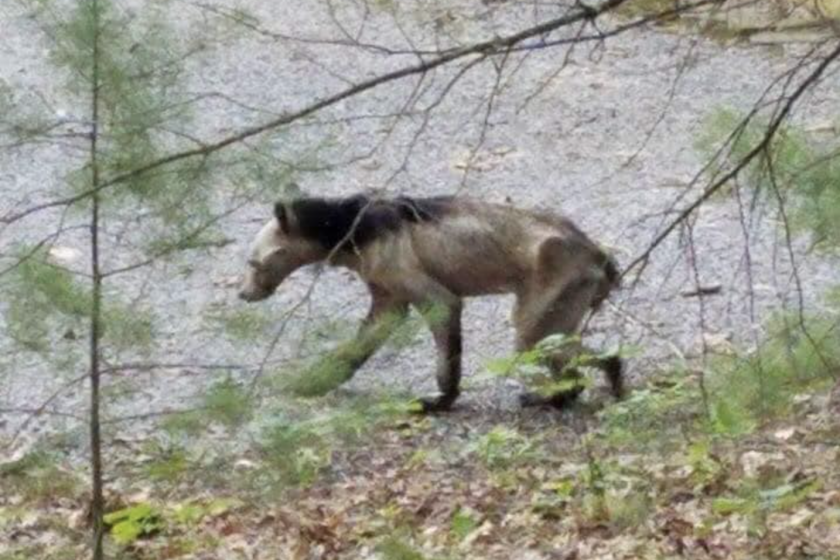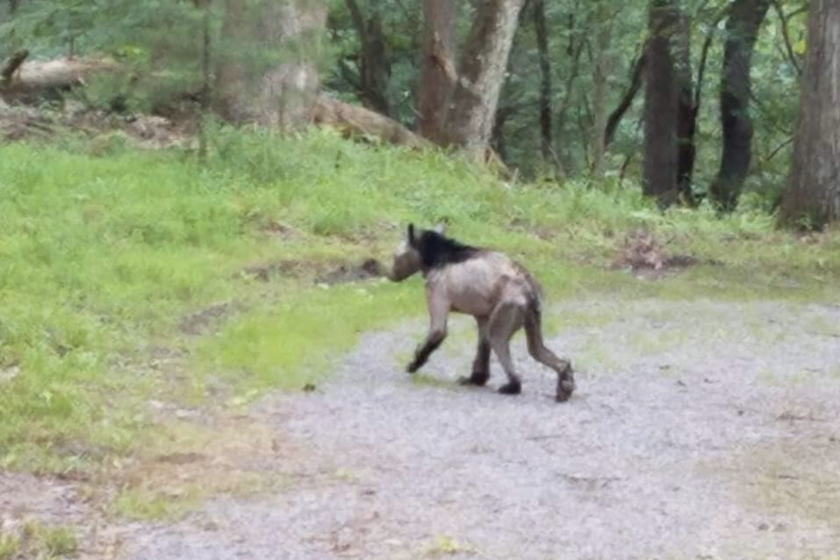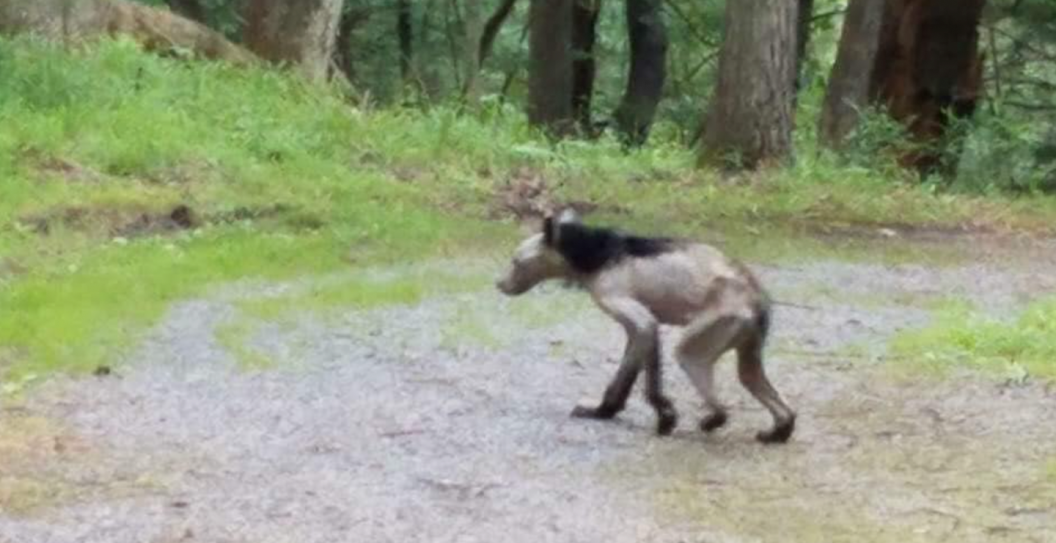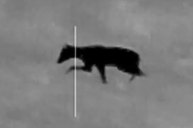With the next full moon just days away, shocking images have surfaced of an animal in Missouri with an uncanny resemblance to a werewolf. But this spooky-looking creature is in fact a black bear suffering from mange.
The images were posted to Facebook by Jeff Hardie on Thursday, June 29 and initially reported on by Field & Stream. The post is rife with comments of "chupacabra" and "werewolf" to describe the sad look of this bear.

Facebook, Jeff Hardie
Sadly, this unsightly occurrence is growing more common. Research shows mange has been increasing in black bear populations since the 1990s with hundreds of reports in at least eight states in 2018 alone. Mange is a parasitic skin disease caused by burrowing microscopic mites. It can affect both wild and domestic animals, usually mammals, and can also affect birds. The most telling sign of mange is hair thinning and loss, though it can cause skin thickening, wrinkling, or flaking as well.
For mammals, this hair loss is usually centralized to the legs and tail, but in more severe cases can occur all over the body. Mange often impacts animals that are already stressed or sick.
According to the Missouri Department of Conservation, black bear populations are recovering in the state after a long hiatus from being spotted due to intentional work to increase wild black bear populations. With more bears around and a nationally increasing incidence of mange, this sight might become more frequent.
Should I Be Scared?

Facebook, Jeff Hardie
The Virginia Department of Wildlife Resources shares mange can be transmissible to humans and pets through direct contact with an infected animal or an area or object touched by an infected animal.
But, there's no need to be scared unless you go around petting hairless bears or wildlife. (Note: This behavior is not recommended, for a multitude of reasons.)
Treatment for animals is usually a drug called ivermectin, which is challenging with wild animal populations due to needing several treatments, though other potential treatments have been explored. Some cases in wild animals will resolve on their own.
Not much can be done for our wild, free-roaming friends. In humans, mange (more commonly referred to as 'scabies' in humans) appears as an itchy skin rash that will often resolve without further treatment, though children and immunocompromised individuals may require treatment.
So, as the full moon dons closer, if you see a creature running around that looks like a werewolf, it most likely isn't.
But do report it to your local department of conservation and don't get too close, just to be safe.
READ MORE: Watch: Rare Sighting of a Bobcat Hunting a Rabbit in Public




